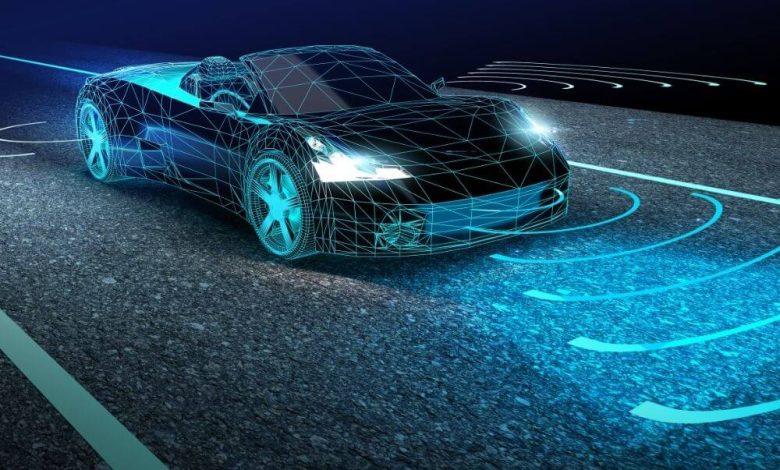Automotive Parts Designing at Rheomold

Automotive design is a creative process that defines the physical appearance of motor vehicles such as cars, trucks, and motorcycles, among others. Including both interior and exterior design. The main challenge of Automotive Parts design is to combine aerodynamics, aesthetics, and ergonomics principles on the one hand, while still meeting Type Approval regulations, which are safety regulations on the other. A vehicle’s exterior design must include several essential shapes to ensure aerodynamic performance: curves, the shoulder, a wedge, and so on. The automotive interior designer faces the challenge of assembling all of the car’s components while maintaining its aesthetics and comfort. Designers are also in charge of selecting the materials that will be used to make the various parts of the vehicle: fabric, plastic, metal, and the trim package. A trim package is a collection of car adornments such as paint patterns, bumpers, wood trims, and so on.
Automotive designers begin by hand-drawing sketches, which are then converted into computer-rendered graphics using CAD (computer-aided design), a sophisticated 3D software. However, these are only the first steps in the creative process and are insufficient to fully evaluate the design of a car or truck.
The next step is to flesh out their original ideas by putting them into action in the real world. Designers achieve this by carving scale models out of industrial plasticine clay. Eventually, a full-size model is carved to capture the look and feel of the final design. Apart from aesthetics, scale models are used for aerodynamic testing.
Rheomold’s Automotive Parts Designing Services:
Rheomold is a leading service provider for manufacturing design services for automotive industries. Innovative and cost-effective engineering solutions are provided by Rheomold to the global automotive industry as a market leader. Our automotive engineering services include feasibility studies, concept design, computer-aided engineering, manufacturing simulations, prototyping, testing, and vehicle architecture, integration, and manufacturing. Additionally, we specialise in value engineering, competitor analysis and benchmarking, reverse engineering, homologation, and industrial productivity improvement.
Rheomold assists industries in visualising and realising their dream projects. Visualisation is a critical component in the development of automotive designs. Using modern technology and tools to create a vision of the final product aids in analysing the deeper aspects of the product composition. The analysis process begins with determining the product’s purpose, planning the execution, and exchanging information. Rheomold helps industries in analysing and establishing design objectives to ensure the success of the project.
It’s time to take action and bring a product design to life after visualising and analysing it. Rheomold provides exceptional services to industries for the execution and implementation of design plans. Rheomold provides end-to-end support to ensure the success of the production, from creating the vision to orchestrating the strategies.
Key Concepts of automotive part design agency:
The process of envisioning and planning the creation of objects, interactive systems, buildings, vehicles, and so on is known as automotive parts design. User-centred, which means that users are at the centre of the design thinking approach. It is about developing solutions for people, physical objects, or more abstract systems to meet a need or solve a problem.
A very broad concept with many different interpretations depending on the field. It pervades many aspects of our lives and divides into numerous subgenres, ranging from product design, sound, virtual reality, interaction, to designing cars, video games, software interfaces, home and office interiors, and so on. Schools responded to the market’s evolution by developing graduate and postgraduate design programmes.
Design is not about making things pretty for the sake of making them pretty. Nowadays, it is classified as a fancy-sounding word, and there appear to be some misconceptions about it. But what exactly is it at its core? Is it just a process for making things that look nice? Not at all. It is not solely concerned with aesthetics, nor is it concerned with embellishing an item. First and foremost, it is about improving the user’s natural and complete interaction with the environment.
While it is neither an art nor a science, it incorporates elements of both. It is the author’s vision, ideas, and feelings that are express through art. While designers’ work can express feelings and leave impressions, this is not their primary goal. As it is about crafting an item, a tool, or even an experience, it takes the creating aspect of art.
Design exists to serve the people.
On the other hand, it takes science’s problem-solving aspect, its primary purpose is to meet a specific need.
The process of creative design:
Problems are best solve when approached holistically and systemically. The purpose of this process is to guide you and organise your work so that ideas can be turned into concrete solutions. Designers conduct research and gather information about the problem under consideration: who is the person experiencing this problem? Why? What other people are doing to solve it? Based on their findings, they develop a general hypothesis and identify the key features that should be included in the solution. Then, keeping these key points in mind, it’s time to try out different solutions and iterate. This final section is about learning from what works and what doesn’t in order to tailor your solution to the needs of the user.
Great design is imperceptible:
It is achieve when the user is unaware of its presence. This principle is especially important in interaction design. Navigating a user interface should feel effortless and natural. The user should be able to quickly grasp its rules and the meaning of its elements. An invisible hand made of colours, shapes, contrast, and repetitions guides the user.


